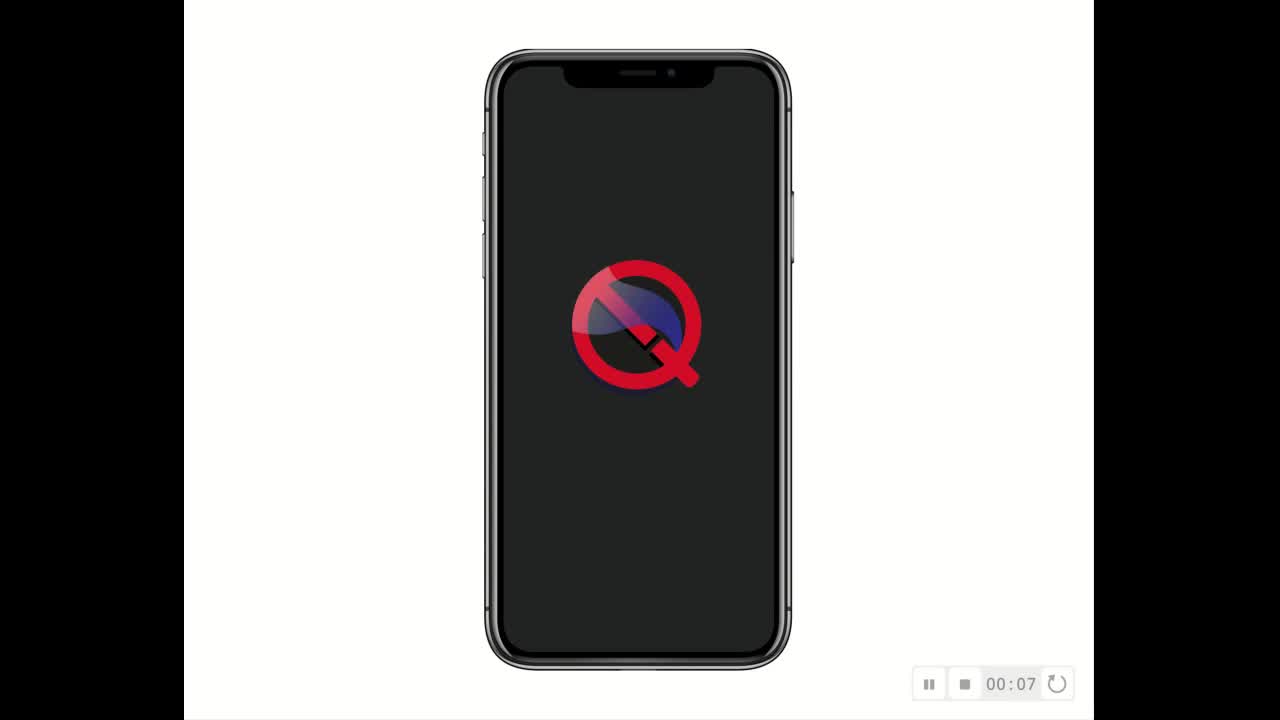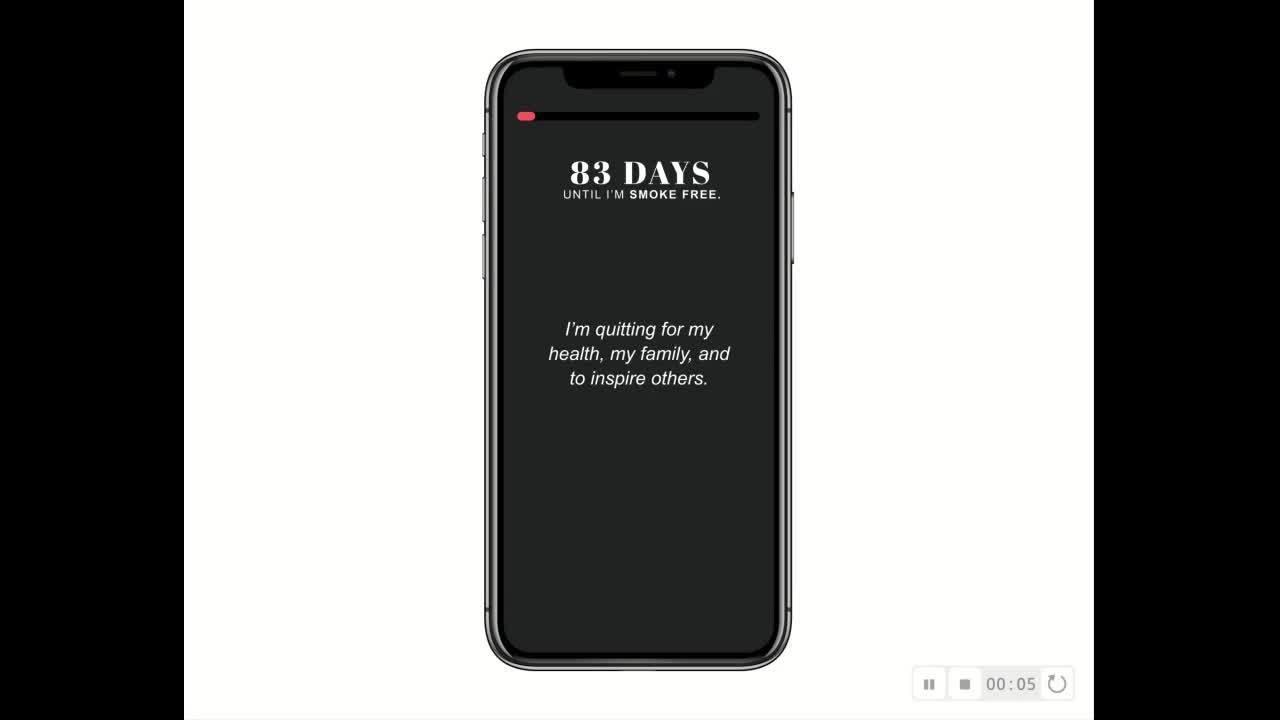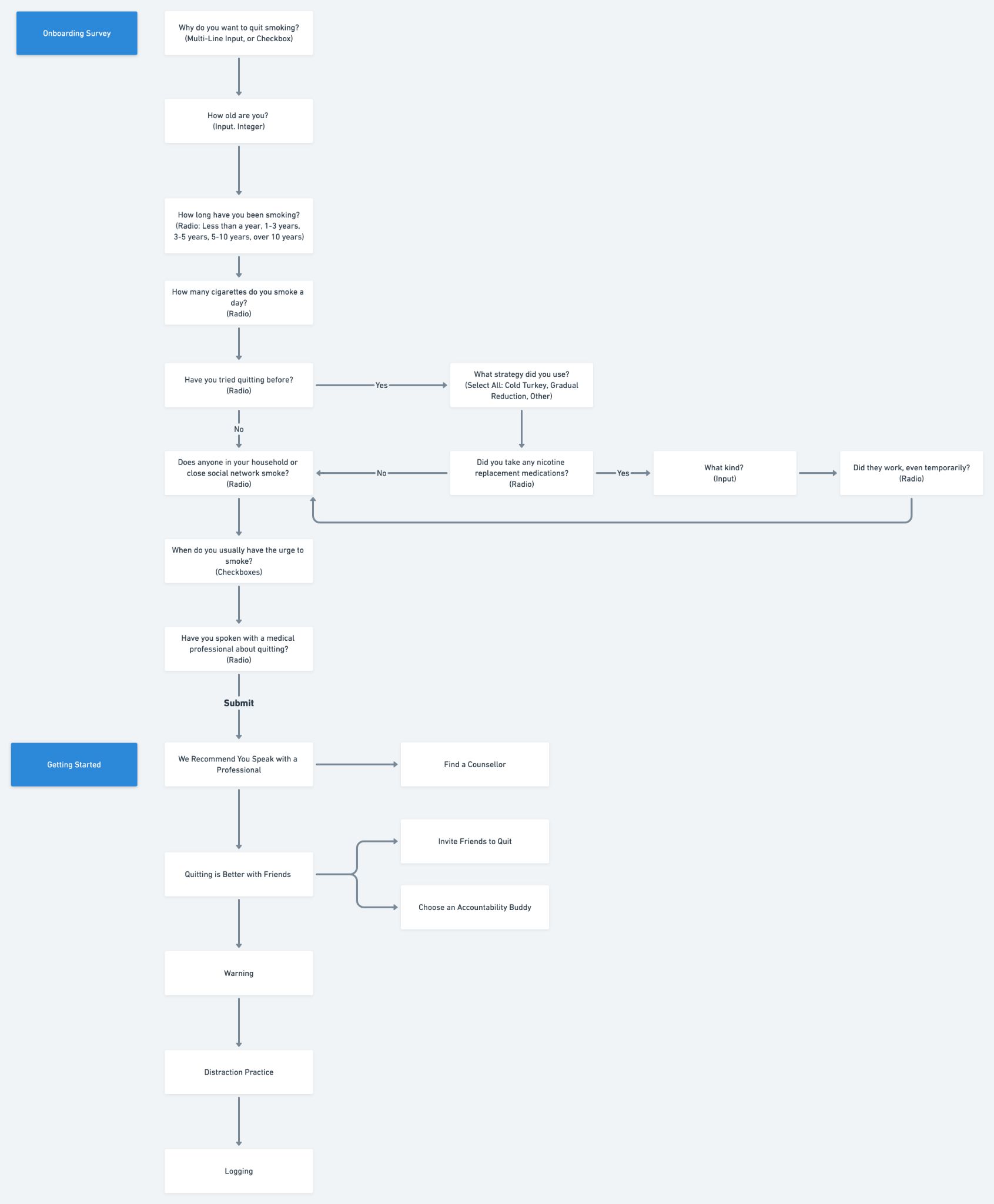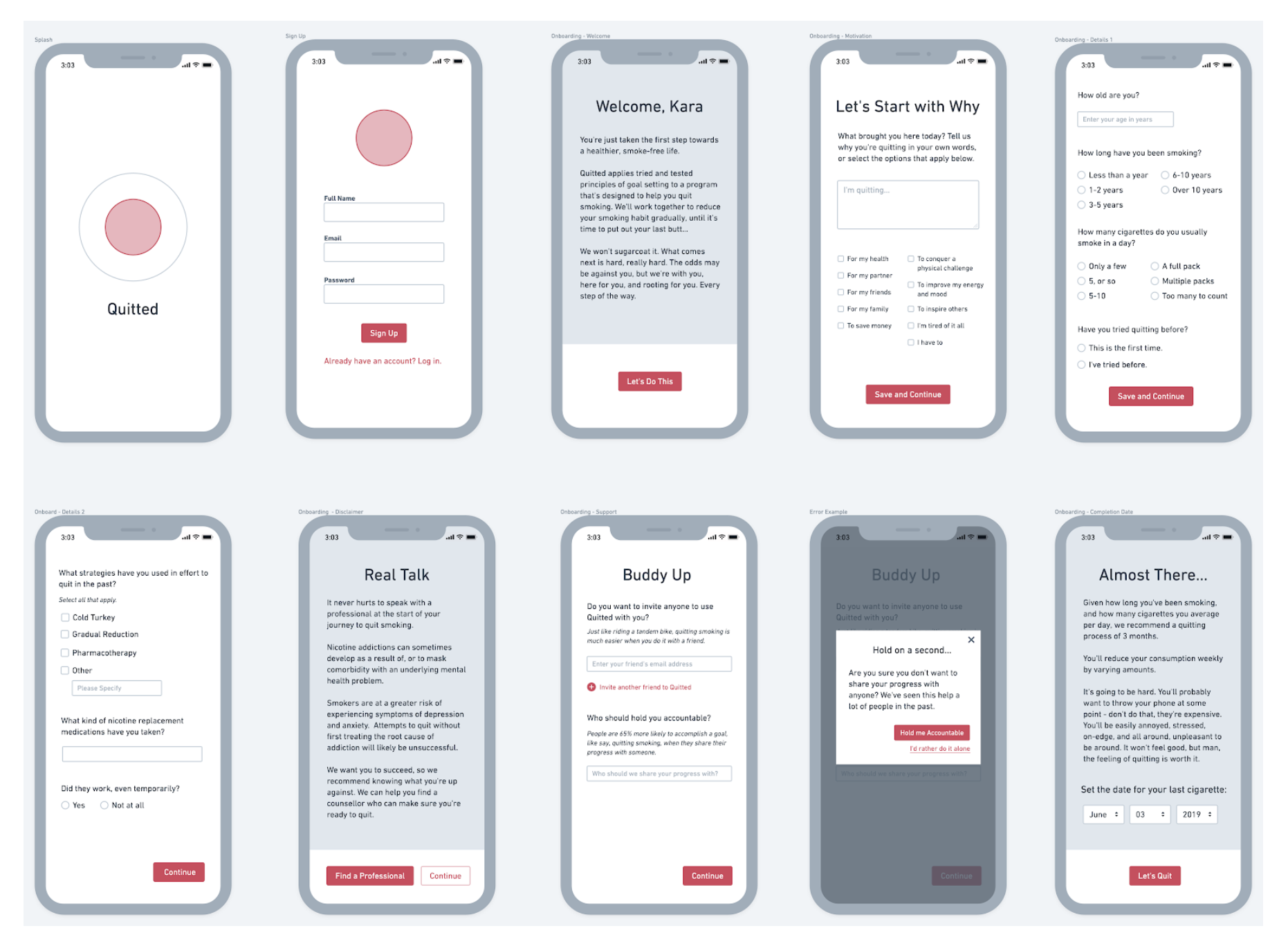
Problem Definition
Smoking is arguably the most dangerous, socially-acceptable habit you can develop. Regular tobacco smoking increases a person’s risk for numerous heart and lung diseases diseases, and nicotine is about as addictive of a legal substance as you can find. Over 16% of the Canadian population are smokers and quitting smoking is really hard. Only 3%-7% of smokers are successful quitters, and most smokers try and quit in excess of 30 times. Evidently, it’s a problem worth solving and a number of smartphone applications have tried – as early as 2011, there were 546 apps for quitting smoking.
Challenges
- There is often comorbidity of a smoking addiction and other health concerns, typically related to mental health. Trying to quit smoking without treating the root cause is nearly guaranteed to fail. It’s advisable to speak with a counsellor either at the beginning of the journey or as a source of ongoing support. Ideally, technology should supplement counselling by serving as a tool to keep the provider informed about the user’s journey, and support the user in-between counselling appointments.
- Smoking is both a physiological addiction to nicotine, and a deeply-ingrained habit, or habitual addition. Ultimately, I think the best solution incorporates a physical component – whether that be nicotine replacement medications, an alternative to cigarettes like Juul, or an actual cigarette-manipulation design like those described by Yi-Wen Tseng. I especially like his idea of increasingly long filters to gradually reduce your nicotine consumption.
Strategies
Due to time constraints, I chose not to complete a competitive analysis or user research. Instead, I would focus on building a solution that encompassed the most successful methods for quitting smoking, regardless of how other applications were designed.
Quitting cold turkey is occasionally successful, but not medically advisable. Moreover, it would make for a pretty basic app. There are, however, a number of gradual strategies that can be used on their own, or combined to yield better, more permanent results. These include:
- Cognitive Behavioural Therapy
- Pharmacotherapy
- Scare Tactics
- Hypnosis
- Support Groups
These are better summarized in three buckets: Habit Changing Strategies (CBT, Hypnosis), Social Support (Support Groups, Scare Tactics), and Pharmacotherapy.
The 4 Ds is a framework by the American Lung Association that summarize in-the-moment strategies for overcoming smoking cravings.
- Delay the Urge: Hold out for three to five minutes and the craving should pass.
- Deep Breathing: Reduce the stress and anxiety that are associated with not having the cigarette you so desperately want.
- Drink Water: Smoking is a habit that consists of holding a cigarette to your mouth, replace the cigarette with a glass of water.
- Do Something Else: Exercise, go see a movie, wash your car – anything that prevents you from keeping a cigarette in your mouth.
Quitted will focus on creating habits to replace smoking (and act as temporary distractions during cravings) and on developing social support. An extension of this exercise could focus on incorporating a physical tool or medication regime to quit smoking.
Goal Setting Psychology
Internal motivation is more effective than external motivation. Rather than relying on push notifications with motivational quotes, or showing users how much money they’re saving by reducing their smoking, this app will focus on reminding users of their reasons for quitting. This should be documented and prominently displayed within the app.
Small wins have big impact. Celebrating small victories (and not dwelling on small setbacks) is an excellent tool for keeping us motivated because we become addicted to progress – that’s right, addicted. Rather than guilting users for giving in to three cravings, we should celebrate that they overcame two of them. Each cigarette not smoked is a win, and an important one at that. This could be incorporated with features such as push notifications (randomly) to congratulate users, or a ‘recent triumphs’ section that reminds the user of historical instances when they overcame cravings.
Accountability is key. The American Society of Training and Development conducted a study that shows you are 65% more likely to complete a goal if you’re accountable to someone else. For this reason, an essential feature to a successful quit smoking app is one that allows a user to share their progress with someone else – whether it be a counsellor, friend, or spouse.
Failure to plan is a plan to fail. If a user knows when their next cigarette is coming, they’ll be more likely to withstand cravings. Planning smoke breaks on a daily basis will also enable us to prompt users to drink a glass of water, have a coffee, or enjoy a breathing exercise at times that would usually be smoke breaks.
The Solution
Concept
Quitted will focus on gradually decreasing a user’s cigarette use, leading up to a hard-stop date when smoking will cease completely. The progress will begin with a 50% decrease while the motivation to quit is high, followed by a 25% decrease, and then a gradual decline to smoke-free. We’ll track a user’s progress and send congratulatory push notifications, offer social support by means of a chat feature amongst app users, and provide tools and resources for overcoming cravings.
Since it only takes 3-5 minutes for a craving to pass, we’ll offer two strategies to keep users occupied during that time: breathing exercises (ideally an integration with an existing mindfulness platform like Headspace), and cognitive training games such as a word scramble, sudoku, and memory games.
We can’t instinctively know when a user will have the urge to smoke, and we can’t always rely on them to tell us, so we’ll focus on developing these distraction tactics as habits, rather than coping mechanisms or cigarette-replacements.
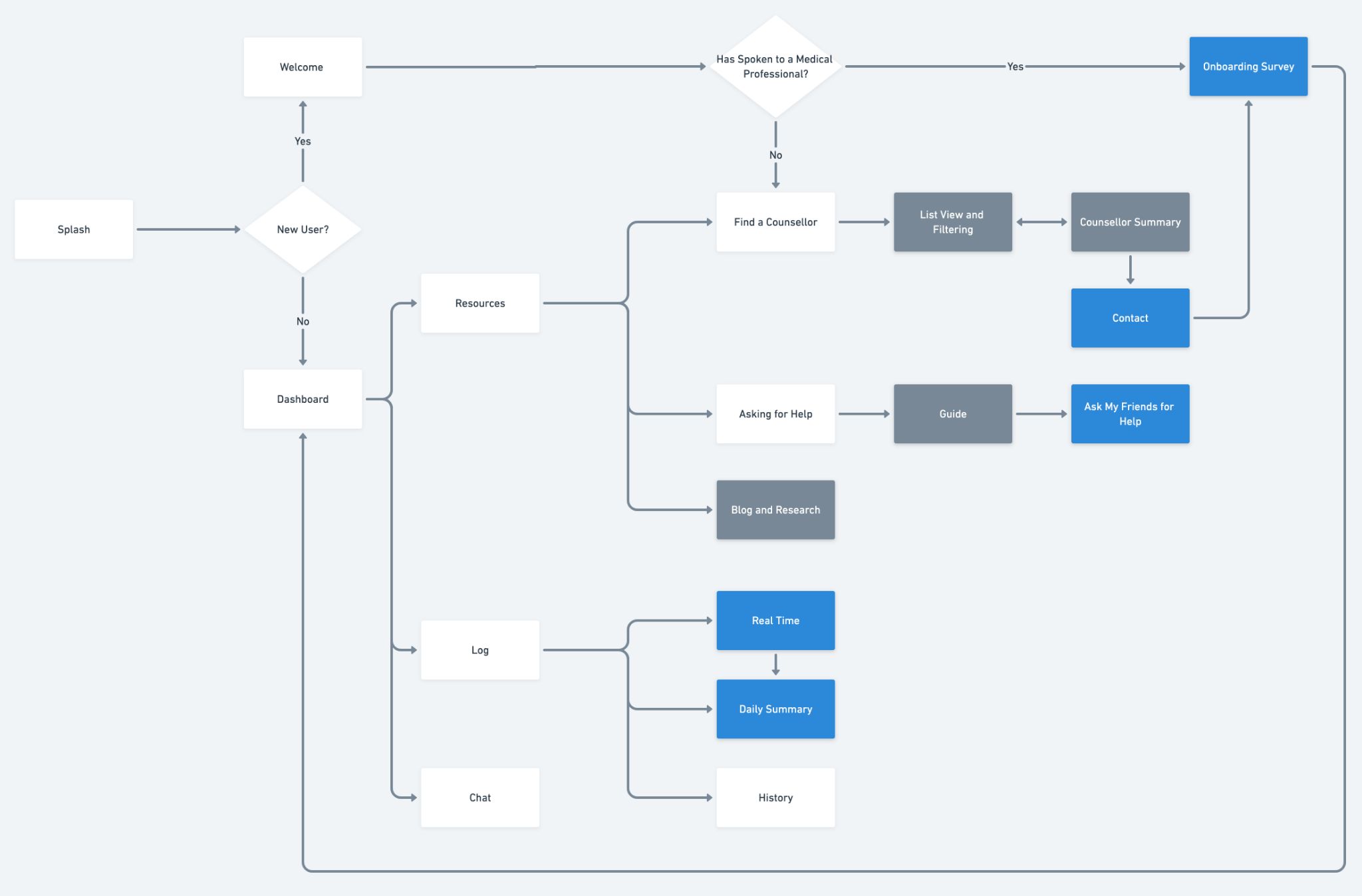
Design
As designers, our goal is usually to make things as easy for our users as possible. We strive for as few clicks as possible to sign-up or check-out, we offer an on-boarding tour to show users where things are and how to use features, we incorporate online chat and help centres so users can get the answers they need.
Signing up for an app to quit smoking should not be easy, because what follows won’t be easy. In a sense, a longer, more laborious sign up process enforces a level of commitment from users to prepare them for what lies ahead.</p
Brand Identity
Although I was unable to dedicate much time to prototyping and creating a pixel-perfect brand, I did have a few thoughts on this.
This isn’t an app that’s designed to make users feel good (well, not as its primary goal), it’s about helping users overcome a very tough challenge.
It’s important that the design reflect this with tone, colour, and layout. A design that belittles users or trivializes the difficulty of quitting would discourage users from using the application, ultimately working against the end goal. I selected a base of dark grey and white with red-tones for the primary colour, and purple and yellow as secondary and tertiary colours.
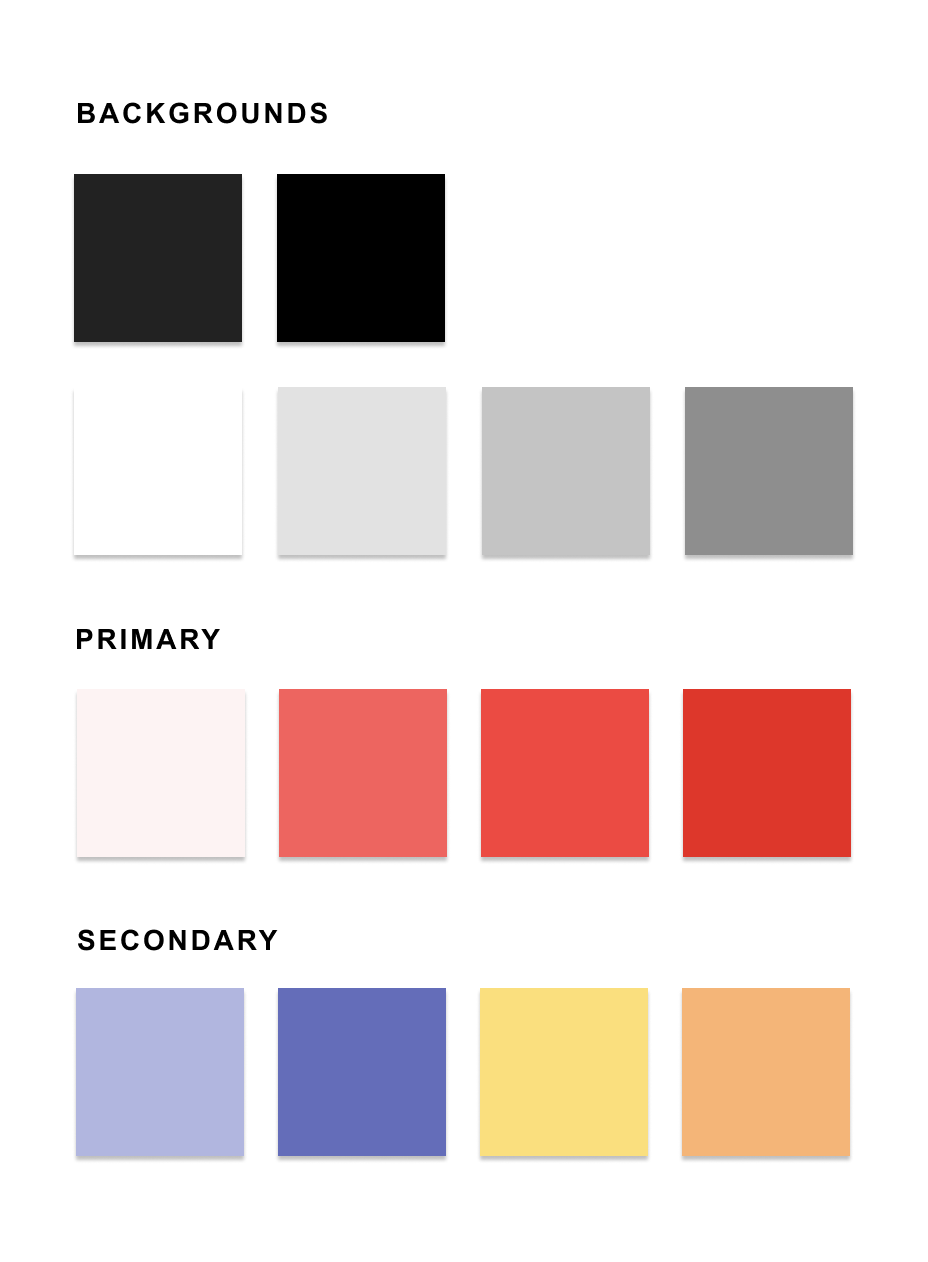
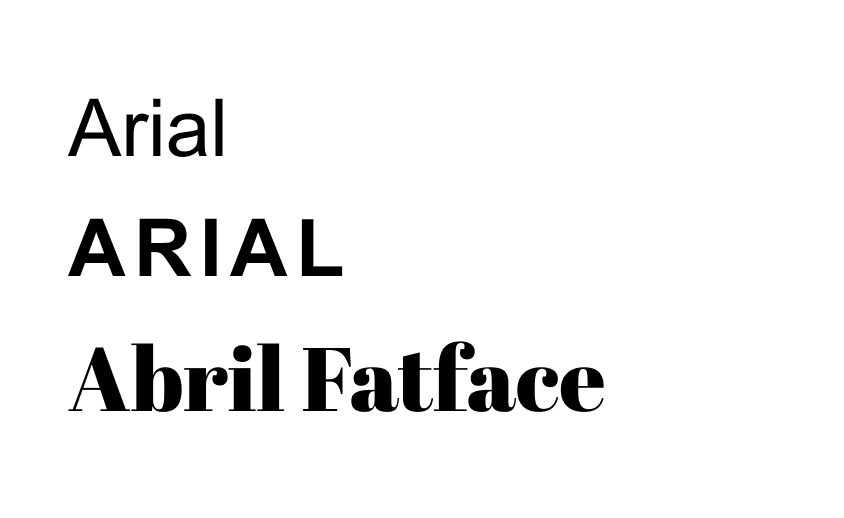
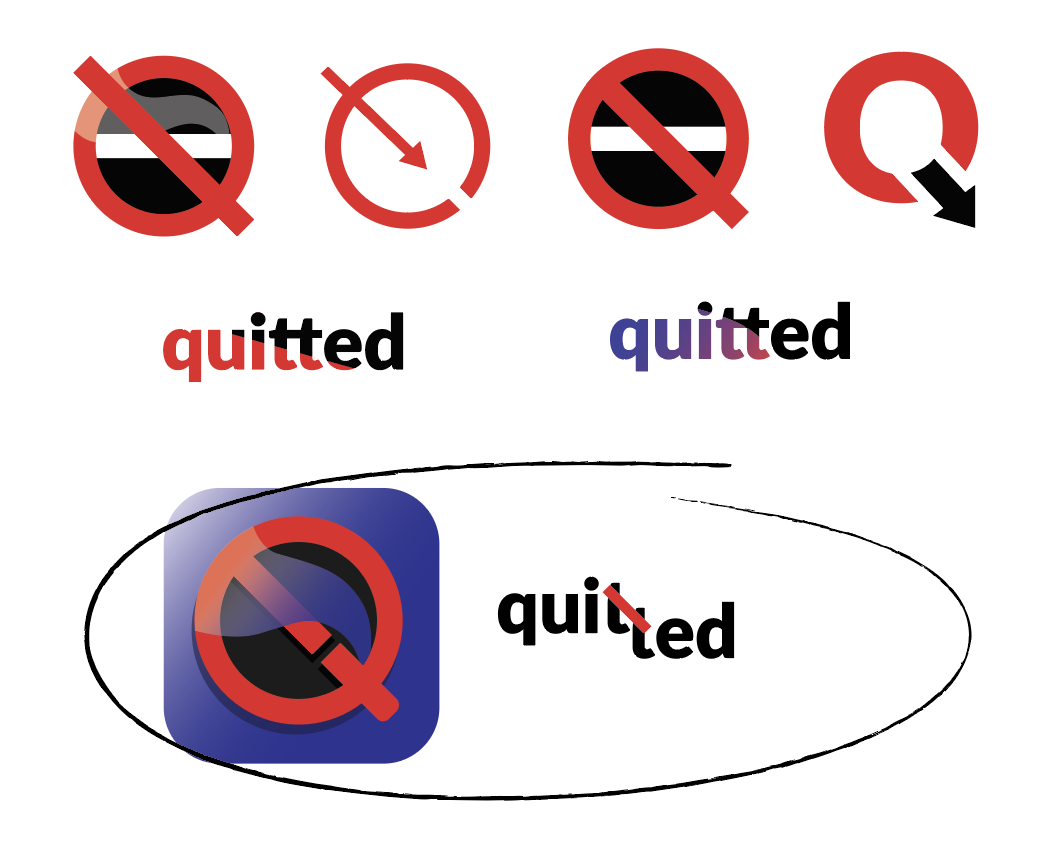
Prototypes
